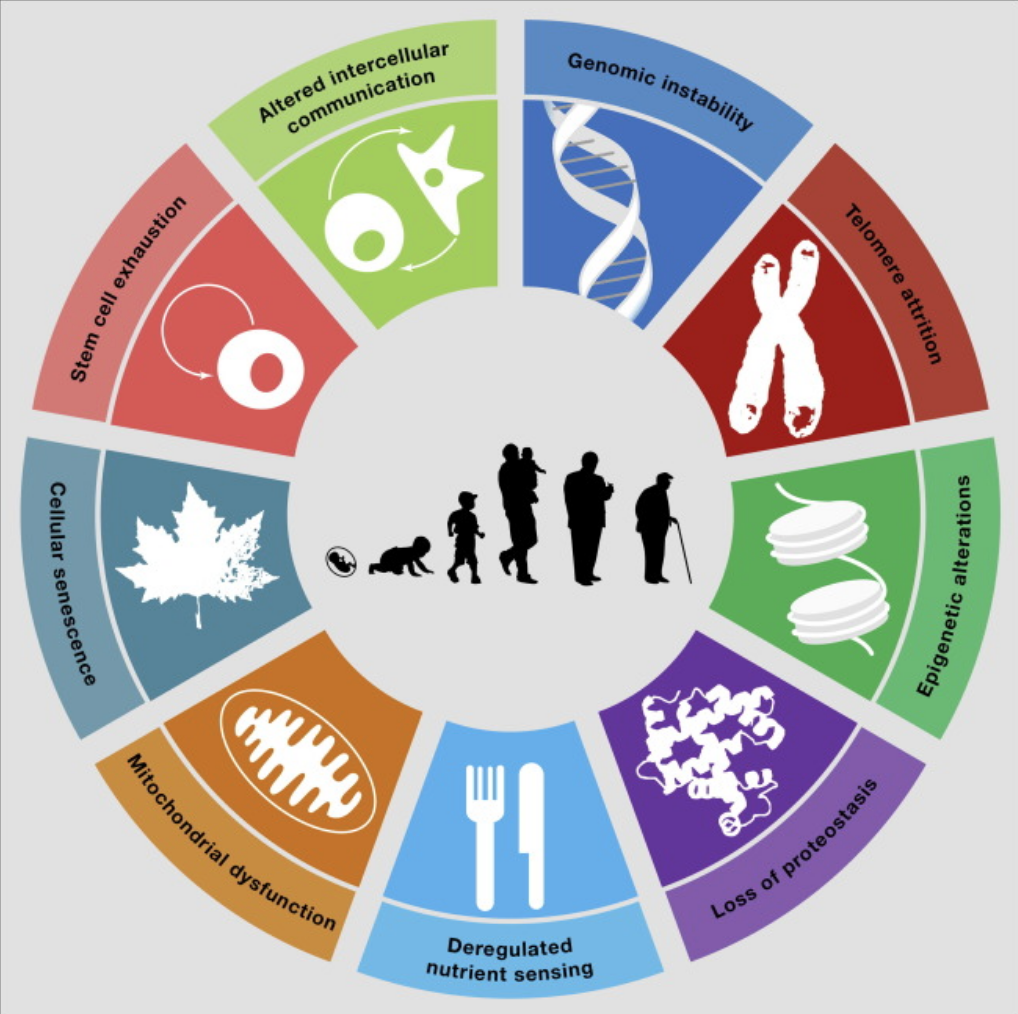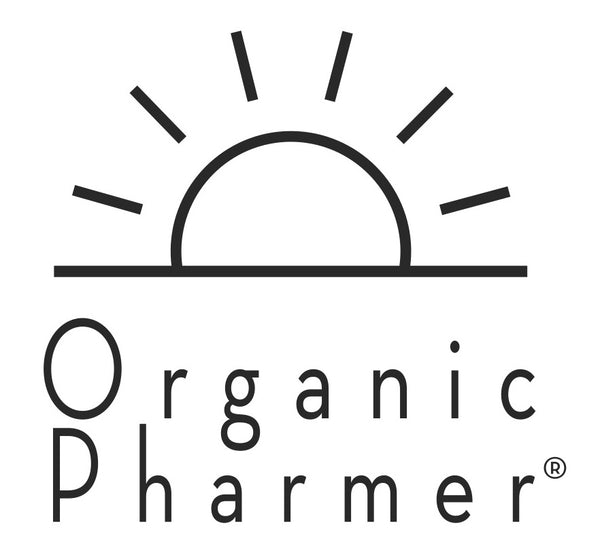
The 9 Hallmarks of Aging | Organic Pharmer
Share
In our last article Health + Fasting we referenced the 9 hallmarks of aging. But what are the 9 hallmarks of aging? Here we go into a bit more detail on each of them and how they contribute to the aging process. Warning it’s a bit science-y!
image rights from cell.com
The 9 Hallmarks of Aging.
- Genomic Instability:Genomic instability refers to an increased tendency for changes to occur in our genetic material (DNA). These changes can include mutations, deletions, insertions, and rearrangements of the DNA sequence. Over time, these changes can accumulate and lead to a variety of negative effects on the health and function of cells and tissues. In the context of aging, genomic instability is considered one of the primary hallmarks because it can contribute to the development of many age-related diseases and conditions .
- Telomere Attrition: Telomere attrition refers to the gradual shortening of telomeres, which are the protective caps at the ends of chromosomes. Each time a cell divides, its telomeres become a little bit shorter. Eventually, the telomeres become so short that they can no longer protect the chromosomes, leading to genomic instability and cellular senescence. This process is thought to contribute to the aging process by limiting the number of times a cell can divide and by increasing the likelihood of DNA damage.
- Epigenetic Alterations: Epigenetic alterations refer to changes in gene expression that occur without changes to the underlying DNA sequence. These changes can be caused by a variety of factors, including environmental exposures, lifestyle choices, and aging. Epigenetic changes can affect how genes are turned on or off, leading to changes in cellular function and behavior. Over time, these changes can accumulate and contribute to the aging process by altering the way cells and tissues function.
- Loss of Proteostasis: Proteostasis refers to the maintenance of proper protein folding and function within cells. Proteins are essential for the proper functioning of cells and tissues, and their structure and function can be affected by a variety of factors, including aging. As we age, our ability to maintain proteostasis declines, leading to an accumulation of damaged proteins that can impair cellular function. This loss of proteostasis is thought to contribute to the aging process by reducing the ability of cells and tissues to function properly.
- Deregulated Nutrient Sensing: Deregulated nutrient sensing refers to changes in the way cells and tissues respond to nutrients as we age. Nutrient sensing pathways play a key role in regulating metabolism and energy balance. These pathways help cells and tissues to sense and respond to changes in the availability of nutrients, such as glucose and amino acids. As we age, these pathways can become deregulated, leading to metabolic dysfunction and an increased risk of age-related diseases such as diabetes and cardiovascular disease.
- Mitochondrial Dysfunction: Mitochondria are the powerhouses of the cell, responsible for generating ATP (the cell’s primary energy currency). As we age, mitochondrial function declines, leading to a decrease in energy production and an increase in oxidative stress. For more on mitochondrial dysfunction read our article Health + Fasting.
- Cellular Senescence: Cellular senescence refers to a state in which cells stop dividing but do not die. This can occur in response to a variety of stressors, including DNA damage and telomere shortening. Senescent cells can accumulate with age and contribute to chronic inflammation and tissue dysfunction. This is thought to contribute to the aging process by reducing the ability of tissues to repair and regenerate, and by increasing the risk of age-related diseases such as cancer and cardiovascular disease.
- Stem Cell Exhaustion: Stem cell exhaustion refers to the decline in the number and function of stem cells as we age. Stem cells play a key role in tissue repair and regeneration by giving rise to new cells that can replace damaged or lost cells. As we age, our stem cell populations decline, leading to a decreased ability to repair and regenerate tissues. This is thought to contribute to the aging process by reducing the ability of tissues to recover from injury and maintain their function.
- Altered Intercellular Communication: Altered intercellular communication refers to changes in the signaling between cells that coordinates their behavior. These signaling pathways play a key role in regulating tissue function and maintaining homeostasis. As we age, these signaling pathways can become disrupted, leading to tissue dysfunction and an increased risk of age-related diseases. This is thought to contribute to the aging process by reducing the ability of tissues to function properly and respond to stress.
Together these hallmarks of aging provide a framework for understanding agings complex nature. All of these have a common theme - cellular damage and dysfunction which in turn are drivers for age-related disease. The good news there are ways you can positively influence aging. Simple and yet a bit elusive stay active, eat healthy, and get enough sleep. Sounds simple enough right?
Where should I start?
1. Read Health + Fasting
2. sign up for a 3 month Phast program today!

